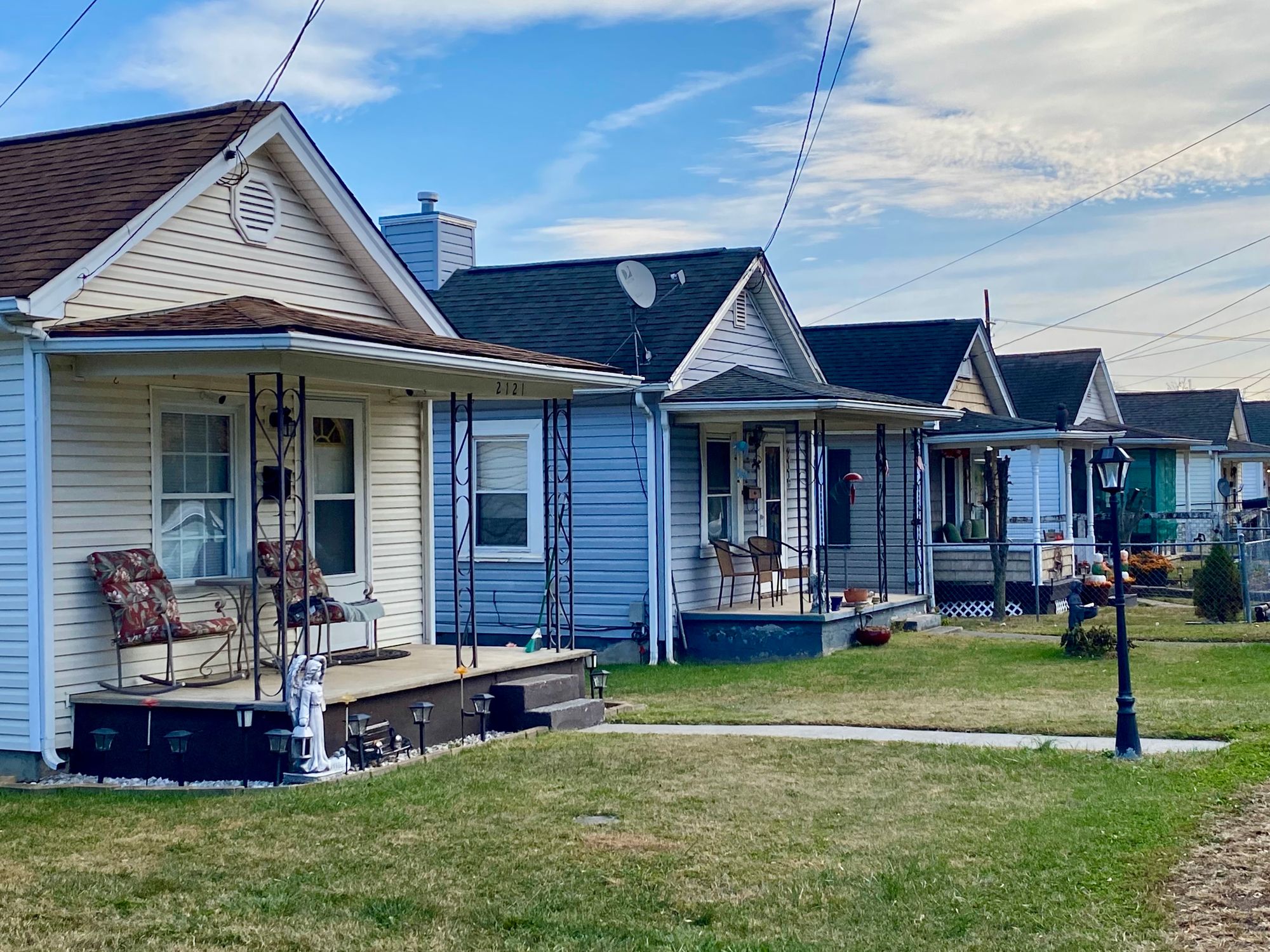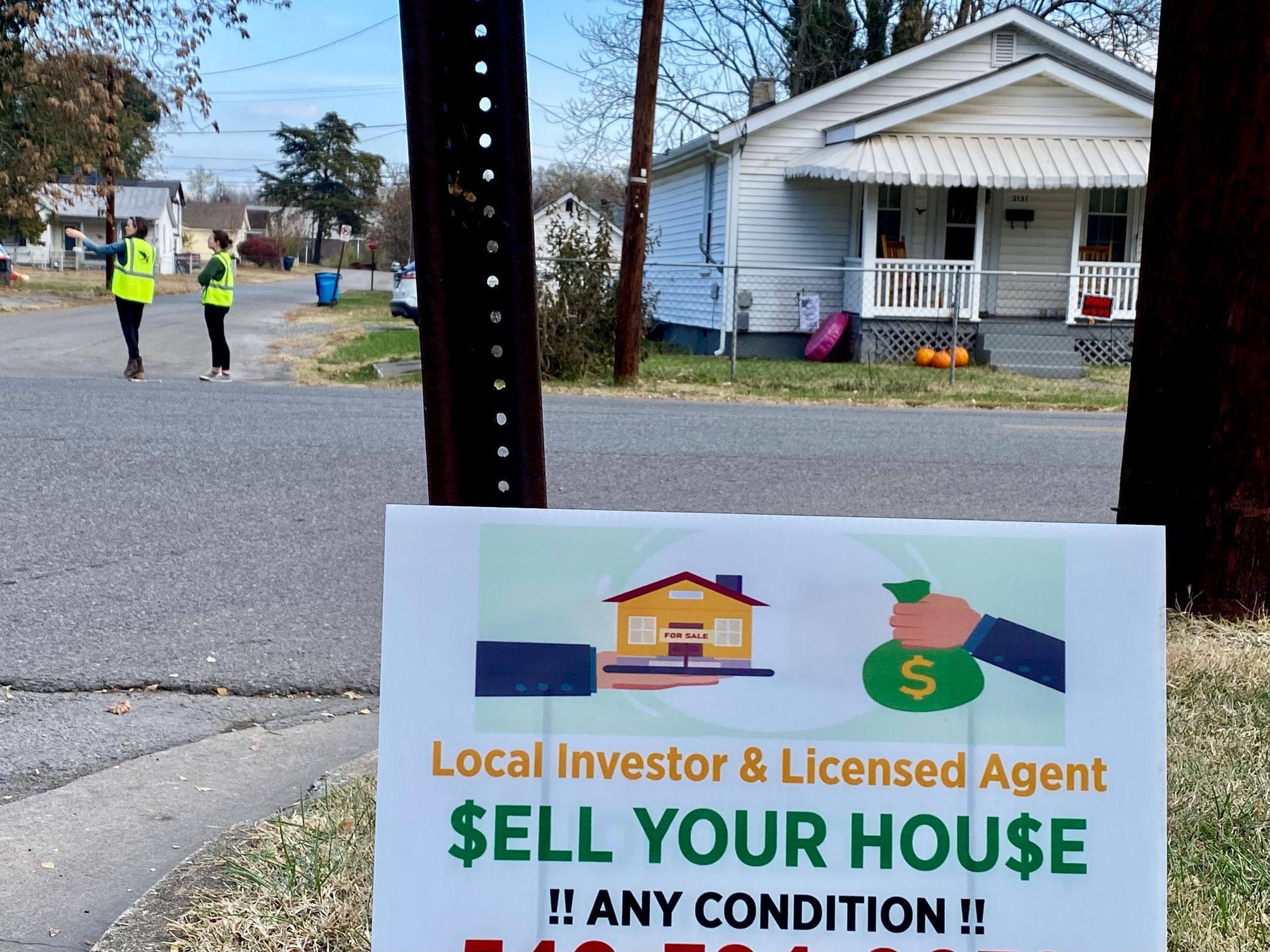Historic District for Roanoke's Norwich Neighborhood Prompts Excitement, Wariness
The plan has prompted enthusiasm and skepticism among some residents, bubbling up fears about changes to the quiet, close-knit neighborhood.

Roanoke’s Norwich neighborhood once produced 4,000 pounds of thread every day.
In the early 1900s, children labored at the cotton mill, as documented by the renowned photographer Lewis Hines.
Hugging the south bank of the Roanoke River, manufacturing plants including the Norwich Lock Company, Norwich Twine Mill, and the Harris Hardwood Company thrived until the mid-20th century, when they “succumbed to floods and fire,” in the words of a city report.
Today, that legacy survives in a few industrial buildings and shotgun-style homes originally built for workers.
Now the city hopes to commemorate that history by listing the neighborhood on the National Register of Historic Places, joining several other Roanoke neighborhoods with that distinction.
“This is really an honorary status” Parviz Moosavi, the city’s historic preservation planner, said at a community meeting Monday.
“In general, the City of Roanoke is utilizing national register districts really as an avenue to cause improvements of the properties” and, as a result, preserve their historic natures, he said.
The plan has prompted both enthusiasm and skepticism among some residents, bubbling up old grievances and fears about changes to the quiet, close-knit neighborhood.
About 50 neighbors showed up Monday to an informational meeting, exceeding city staff’s expectations in a packed room at the Raleigh Court Branch Library.
Listing on the National Register of Historic Places means property owners can take advantage of tax credits to renovate their homes or businesses. But the status has no bearing on the type of strict design guidelines that operate in some of Roanoke’s local historic districts, such as Old Southwest and Gainsboro.
Several concerned residents appeared allayed by the news that getting new windows or roofs wouldn’t be subject to the city’s Architectural Review Board.
“No ARB? No review board? Great,” one resident asked and immediately left.
This week, consultants have started taking photographs of homes, churches, stores and Norwich Park as part of the project.

The city has contracted with a Detroit-based architecture firm, Kraemer Design Group, which intends to document about 300 properties north of Memorial Avenue and Mountain View Terrace Southwest to the railroad tracks.
Such a historic nomination process requires a consultant’s expertise on the neighborhood’s architectural character, according to the city.
Back in March, Roanoke City Council agreed to spend $20,000 to match a $40,000 state grant for the work.
Though a historic designation doesn’t prevent property owners from tearing down or making specific repairs to buildings, some residents remain wary of the city’s intentions.
“We don’t like this. We feel like it’s a done deal and they’re imposing it,” long-time Norwich resident Peggy Gray said with a family member after the community meeting.
Gray said she’s lived in the neighborhood nearly 50 years.
She bemoaned a lack of investment or care from the city, citing the closure of the Norwich Recreation Center during the Great Recession and the city’s fight with Walker Machine & Foundry over expanding the Roanoke River Greenway. (While that dispute ended in a land swap in 2020, allowing for the Greenway to reach Salem, Walker in court had blamed the city’s threat of eminent domain for ruining its business.)
She believes the historic status will benefit developers but drive out residents like herself.
“The city has always neglected and turned their backs on this neighborhood,” Gray said. “They have just shunned us for years and I don’t trust them now.”
Royston Smiley is a newcomer to the neighborhood. He lives a few minutes away, but a couple months ago he opened a Jamaican restaurant in the heart of Norwich.
Asked why he settled on the 1930s building in the area, Smiley said, “the grace of God.”
Royston Smiley is a newcomer to the Norwich neighborhood, where a couple months ago he opened a Jamaican restaurant. PHOTO BY HENRI GENDREAU FOR THE ROANOKE RAMBLER
“It’s a good neighborhood,” Smiley said while turning over pieces of jerk chicken on an outside grill. “I’m in for anything that will build up the neighborhood.”
The city and consultants aim to wrap up the nomination by May, when another community meeting will be held. The following month, a state board in Richmond will consider the proposal.
The neighborhood once known as “Turkey Bottom” saw its first home built in 1825, according to an account from the city. The area flourished as an industrial center with the arrival of the Norfolk & Western Railway in 1882. The first industry, the Norwich Lock Co. of the eponymous Connecticut city, gave the neighborhood its present name.
Roanoke's other residential neighborhoods listed on national register include Belmont, Gainsboro, Melrose-Rugby, Riverland, Wasena and an area encompassing Old Southwest, Mountain View and Hurt Park.

